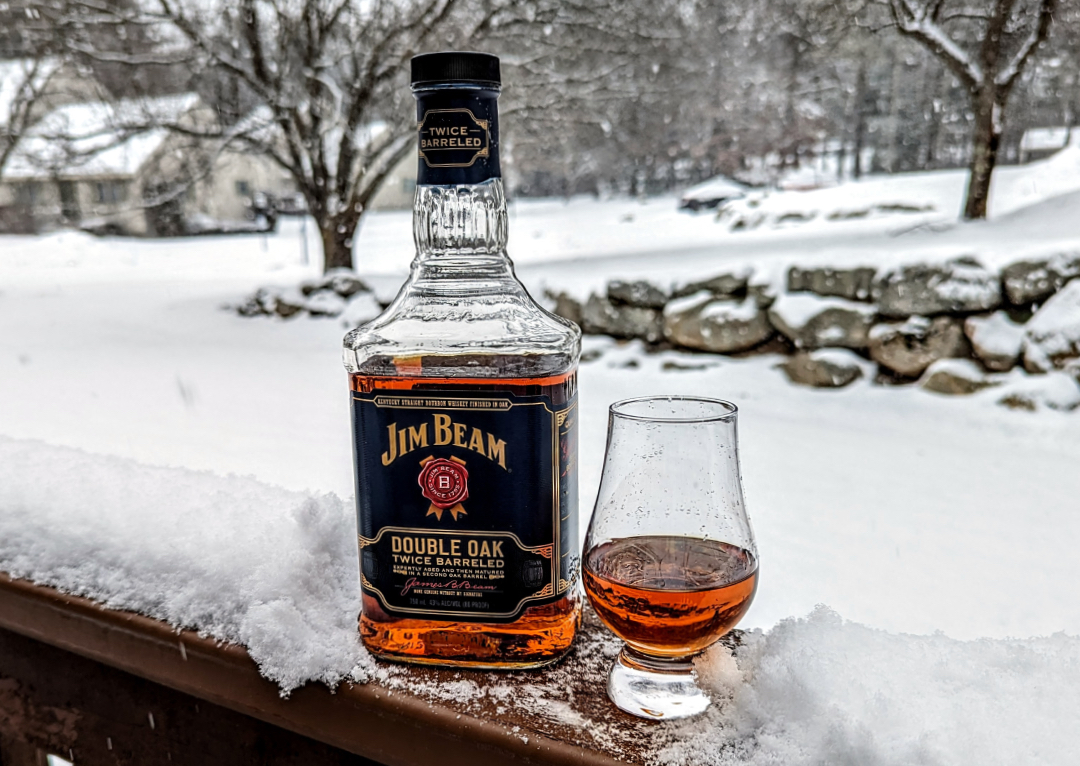The history of the Jim Beam family begins in 1740 when the Boehm family came to the 13 colonies, determined to live the colonial dream. 48 years later, they moved where Kentucky is now and changed their name to Beam. By the late 1700s, German, Scottish and Irish settlers were making rye whiskey in Western Pennsylvania. With government incentives to move west and grow corn, many moved to the Kentucky region. Among them was Jacob Beam who used his father’s whiskey recipe to distill corn into a new, sweeter kind of whiskey. And just like that, Jim Beam bourbon was born.
Normally, Jim Beam Bourbon isn’t a brand I buy because I view it more as bottom shelf whiskey. In my mind it has always been something that is used in a cocktail. However, this year I got a bottle of Double Oak as a Kris Kringle gift. Jim Beam Double Oak is first aged in a newly charred American White Oak barrels. After, Jim Beam Bourbon pours it into another freshly charred white oak barrel to mature for a second time. According to the company, the added interaction with the oak results in a liquid intense in flavor and smooth in taste.
Bourbon Review: Jim Beam Double Oak
ABV: 43% (86 Proof)
Age: 4 Years Minimum
Mash Bill: 75% Corn, 13% Rye, 12% Barley
Distilled & Bottled By: James B. Beam Distilling
Location: Clermont, KY (USA)
The Nose: The aroma from the glass is rather sweet with notes of caramel, mocha and oak. It’s rather complex for Jim Beam and catches me off guard. Letting the glass sit for a bit sees an additional nose of licorice, cinnamon and nutmeg with a lingering apple component.
The Taste: Out initial sip of the Jim Bean Double Oak sees is front loaded with vanilla before revealing notes of an abundance of oak (it is double oak, after all) and some caraway seeds (think rye bread). Additional sips see the oak components become dominant on the palate but it also introduces nuances of cherry, marshmallow fluff and a tiny wisp of apricots.
Conclusion: The art of Double Oak is when a bourbon company takes a new virgin white oak barrel and ages their bourbon in it. Then, the company uses the resources to create a second virgin barrel and performs double aging. The result is the destruction of two barrels for the sake of one bourbon. After they are used they can no longer be used again for a bourbon. It’s not cost productive and it makes zero sense how the Double Oak is only $5.00 more than the regular release. Especially when other companies (Old Forester 1910, Woodford Double Oaked) see their double oak offerings priced considerably higher.
With that said the Jim Beam Double Oak is a lot better than I expected. It’s not going to win awards and it is probably best suited for a cocktail then neat or over ice. The price point makes it a decent entry for someone familiar with the regular Jim Beam who wants to see how Double Oak changes it up.
Score: 86
Price: $24.99 (750 ml in New Hampshire)

